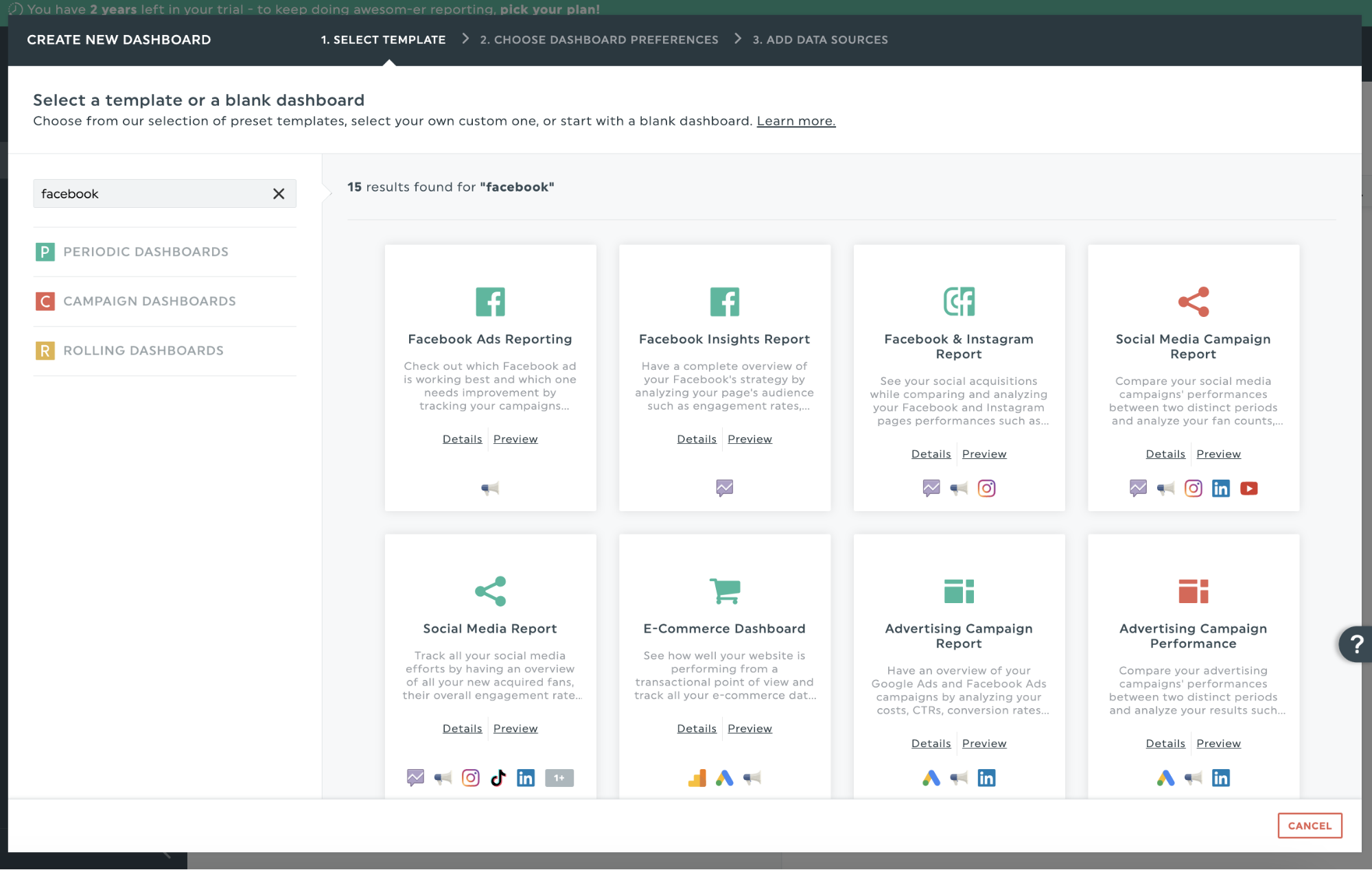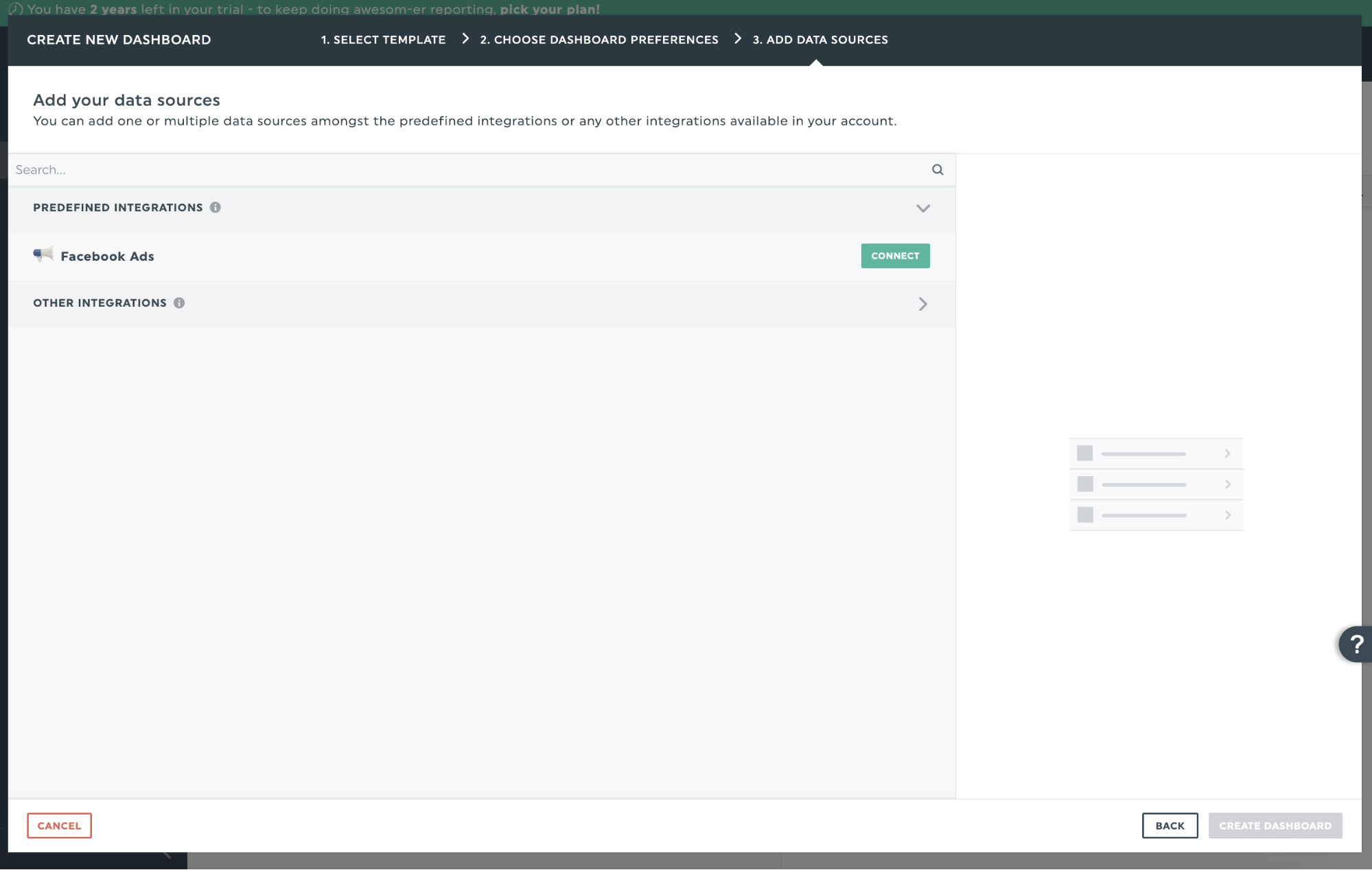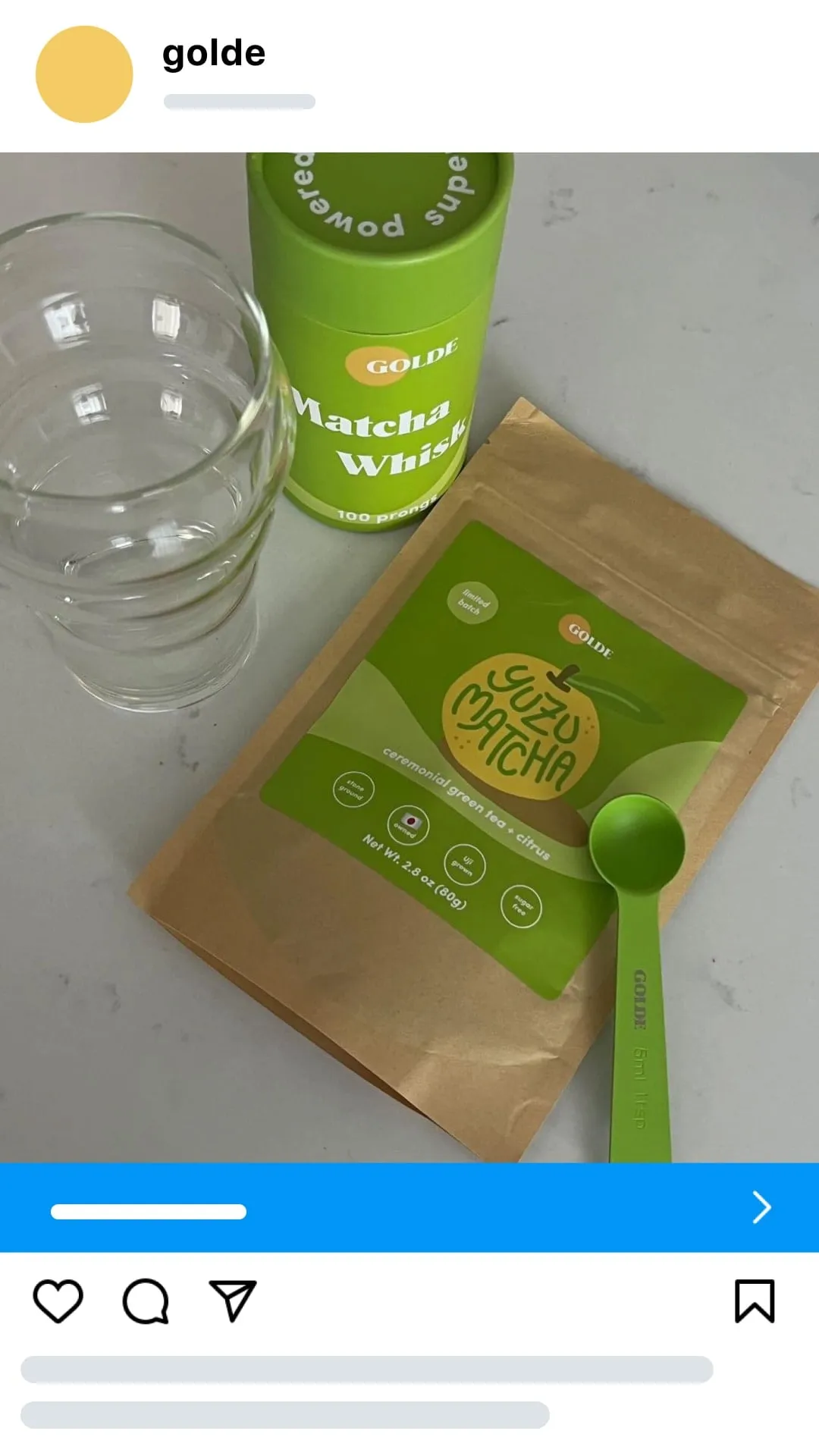A Comprehensive Guide To Measure and Improve Facebook Ads ROI

With nearly 3 billion users worldwide, Facebook offers a wealth of data and precise targeting options to reach potential customers for lead generation—even for B2B campaigns.
But when every marketing dollar counts, how do you ensure your Facebook marketing efforts generate a return on investment (ROI) for your clients? We’ve compiled this guide to help you measure and report your Facebook ad campaign ROI and practical tips on getting more out of your advertising budgets.
- What is Facebook ads ROI?
- How to measure your Facebook ads ROI
- Practical tips to improve your Facebook ads ROI
- How to create and share a Facebook Ads ROI report in DashThis
- A Facebook ads report template you can use to simplify your reporting
- Streamline your Facebook ROI reporting
What is Facebook ads ROI?
Facebook ads' ROI is the amount of money you earn from your ads relative to your spending.
Any performance marketer must understand and communicate ROI to their clients with a campaign report. By monitoring your Facebook advertising performance, you’ll better understand whether your marketing strategy is working, including how Facebook ads perform relative to other channels like Google Ads. You’ll also know which campaign aspects to tweak, including targeting, ad creative, or bidding strategy, to improve your ROI.
What’s a good Facebook ads ROI?
This is a popular question, and our answer is “it depends.”
Why? Many factors influence your Facebook ads ROI, including:
- Advertiser goals
- Landing page user experience and content
- Industry vertical
- Targeting and retargeting approach
- Number of employees
- Product price
- Campaign strategy
- Bidding strategy
- Ad creative format
- Ad copy
With so many factors to consider, performance and ROI benchmarks vary widely. Wordstream’s 2024 benchmarks saw an average conversion rate of 8.25%. However, conversion rates vary across industries from 3.95% to 11.34%.
Our advice? Use benchmark data and averages as a starting point to assess your performance and ROI key metrics, but set your own campaign goals and success criteria based on your industry and past performance data.
How to measure your Facebook ads ROI
Key ROI metrics to include:
ROI metrics answer two key questions:
- How much are we spending on our Facebook ad campaign?
- Is the campaign effective at bringing in new customers?

Key Facebook ads ROI metrics reported with DashThis
Since we’re focusing on ROI, engagement metrics like click-through rate (CTR), cost-per-click (CPC), or brand awareness metrics like impressions and reach may not be as relevant here.
Some examples of ROI metrics to include in your Facebook ads report:
- Return on ad spend (ROAS)
- Customer lifetime value
- Conversion rate
- Cost per conversion
- Customer acquisition cost
How to calculate your Facebook ads ROI
You’ll need to know three things:
- The number of sales or average customer lifetime value
- The time period you’re calculating ROI for. For example, this can be monthly, quarterly, or every six months.
- How much you spend on Facebook ads, including campaign, content creative costs and labor costs.
Once you have these three numbers, subtract your total campaign costs from your total revenue and divide by your total costs to calculate your ROI.
For example, you’re an e-commerce business running Facebook ads to drive sales. Your product sells for $200, and you get 200 sales from your Facebook ads campaigns in a month, earning you a total revenue of $40,000.
After deducting campaign costs of $10,000, you have a total ROI (40,000 - 10,000) / 10,000, which is an ROI of 300%
Tools and platforms to track and analyze your Facebook ads performance
- Meta/Facebook Ad Manager
Meta’s native ad tools offer several ways for marketers to visualize their Facebook campaigns' ad performance. It’s an easy (and free) way to get started with Facebook ad performance and reporting.
- DashThis

Get this Facebook Ads report template with your own data!
If you need to report on more marketing channels beyond Facebook ads reporting or are presenting a report to a client, save yourself and your team’s time by investing in a Facebook ad reporting tool.
DashThis integrates with 30+ integrations to get a complete view of your client’s marketing performance in one meaningful dashboard. Your clients can see progress without reading a wordy report or digging through numbers, creating a better overall client and reporting experience.
Practical tips to improve your Facebook ads ROI
Take advantage of A/B testing
Succeeding at Facebook Ads takes trial and error. Systematic application of ad best practices and monitoring of campaign metrics can help you determine what's working and what's not.
Here are three areas digital marketer Carl Broadbent regularly tests in his Facebook ad campaigns.
- Creatives: A/B test multiple creatives weekly, including headlines, images and call-to-actions (CTAs).
- Ad format: Test different formats like carousels, short videos or image collections
- Messaging: Test different messaging angles and tones. For example, analyze whether an aspirational tone, problem-solving approach, or emphasis on social proof works better in your ad campaign.
Use performance data and data from Facebook insights to optimize your campaigns and stop poor-performing A/B tests. Take advantage of Facebook’s dynamic creative testing feature to help you automatically determine the best-performing ad elements. This Facebook ads feature mixes and matches ad elements like headlines, images and calls-to-action to create personalized creative variants.
Use high-quality creatives
Besides optimizing targeting, a Meta study suggests optimizing your ad creatives is one of the most effective ways to lower your cost-per-click and improve your Facebook Ads ROI.
But what is high-quality creatives? It means following creative best practices closely, such as:
- Frame video ads for mobile screens
- Use lower-production videos and natural lighting
- Not placing critical information in the top 15% and bottom 35% of the screen in video ads
For example, the e-commerce brand Goldie focuses on its product in its ads while conveying its vibrant brand colors with bright, contrasting colors.
Source: Meta Creative Centre
For more marketing campaign inspiration, visit Meta’s creative centre, where you can find ad examples and actionable tips for optimizing your Facebook ad campaigns.
Avoid ad fatigue by rotating your ads and capping ad frequency
Even the most creative ads get stale. A study shows overexposure to the same ad campaigns was described as ‘annoying,’ leading to a 16% drop in purchase intent among viewers who see the same ad over six times.
Meta marks your over-exposed ads with the Creative limited or Creative fatigue label in the Delivery column. That’s a sign for you to create a different ad from your original ad or target a different target audience demographic who have not seen your ad for higher ROI.
You can also implement an ad frequency cap to minimize ad fatigue. While aiming for an ad frequency of two times a week delivers strong results, test regularly to determine the optimal ad frequency for your ad campaign and audience.
Report and analyze your campaign performance regularly
Regular reporting helps you and your client get an overview of KPI trends and patterns, making it easier to identify changes or future A/B testing opportunities to improve ROI. You’ll also build trust with your clients with consistent weekly reports or monthly reports.
Regular reporting also helps you factor in seasonal trends influencing your campaign performance and audience targeting. Ravi Sharma of Webomaze says, “Sometimes, campaigns can work great according to the situation and what is trending. Hence, notice the trends and patterns by analyzing seasonal and normal data. This way, you'll see when your campaign has the chance to perform well and when it might not give the expected results.”
For example, the end-of-year retail peak season tends to have more sales and engagement activity than other times. Identify your client's peak sales periods and factor these seasonal factors into your analysis or recommendations.
Use tools like DashThis to visualize your Facebook ads' ROI data effectively.
DashThis integrates with Facebook Ads, so you can import ROI data and create customizable reports in seconds to track KPIs like conversion rate, ROAS, and cost per conversion.
Improve ad relevance by refining audience targeting
Facebook is one of the largest social media platforms, so getting super-specific with Facebook ad targeting is vital to reduce wasted ad spend. Use Facebook targeting tools like lookalike audiences, detailed targeting and refer to campaign performance data to refine your targeting criteria.
Expanding on his audience targeting strategy, David Ciccarelli of Lake says:
“The “spray and pray” approach to targeting rarely works unless your brand is a household name. Lookalike audiences offer a great way to target users with characteristics similar to your current ones. The minimum lookalike audience size in the US is quite large at around 1 million users, even if you’re only targeting the top 1%. So, you really need to combine efforts to refine targeting and focus on the right people. When you add interests within the “Detailed Targeting” options, you can define users within a lookalike audience by relevant interests to connect with more qualified targets and reduce wasted ad spend.
How to create and share a Facebook Ads ROI report in DashThis
You’re already working hard to optimize your Facebook ad campaigns, so why not ensure you present your results to clients in an understandable, visually appealing format?
Reporting your results ensures your clients can see the value of your hard work. But manual reporting takes ages, and you’ve got better things to do. Here’s how to use DashThis to create a Facebook ROI report for your clients in minutes.
First, start by signing up for our 15-day free trial.
Step 1: Create a new dashboard
Click on New Dashboard, where you’ll see DashThis’s report template library. You can start creating a dashboard from scratch or use one of DashThis’s preset templates.
Choose the Facebook Ads Reporting template for an easy way to start building your report.

Step 2: Connect your Facebook Ads account to DashThis
Then, connect your Facebook Ads account to DashThis. DashThis’s native integration simplifies this process into a few clicks!

Step 3: Share your ROI report with your client
Set up DashThis to deliver your report every week or month at the same time.

DashThis offers multiple report-sharing options, like
- Automated email dispatch
- A URL link to the report for clients to view in real-time during your in-person or video conferencing client meeting
- Export the report as a PDF to attach to your email, or to upload to a client folder.
A Facebook ads report template you can use to simplify your reporting

Get this Facebook ads report template with your own data!
Need a template to turn your data into client-ready presentations quickly? Check out our done-for-you Facebook ads report template, which includes essential ROI reporting metrics, data visualizations, and sections to simplify campaign analysis and ROI reporting.
Report templates are fully customizable, meaning you can drag and drop metrics, reorder sections, and white-label your reports for your clients. Once you’ve found a combination of integrations and KPIs you want to reuse for future reports, save the dashboard you’ve just completed as a template to save even more time!
Streamline your Facebook ROI reporting
You’ve got your hands full, creating campaign strategies for your clients, monitoring campaign results and building client relationships.
Why not automate the tedious task of reporting so you can focus on more valuable tasks? Try DashThis and save time on manual reporting.
Ready to track your Facebook ads ROI?
Read More
Don’t miss out!
Automate your reports!
Bring all your marketing data into one automated report.
Try dashthis for free


